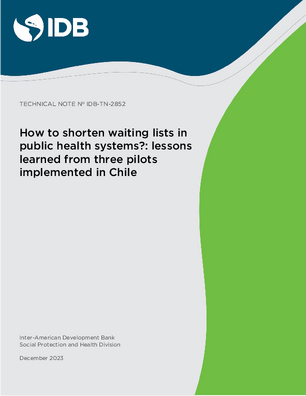How to shorten waiting lists in public health systems?: lessons learned from three pilots implemented in Chile
Date
Dec 2023
The increase in waiting lists for care is a very relevant problem for health systems. While some of the causes are related to deficits in the supply of professionals, equipment and infrastructure, others are related to poor patient management. International experience confirms the importance of combining management with financing.
And, within management, consideration should be given to the patients transit or journey through the care pathway. Referral systems play a key role in the management of patient flow and may be affected by the persistence of various sources of inefficiency. Within the framework of the technical cooperation project of the Inter-American Development Bank (IDB) with the Chilean Ministry of Health (MINSAL), and together with the Public Innovation Laboratory of the Pontificia Universidad Católica de Chile, a study was carried out to identify the key performance points that represent opportunities for improvement in management to reduce waiting lists and waiting times in specialty care. This study resulted in a clinical management optimization model that was applied on a pilot basis in three specialties.
In addition, performance metrics were comparatively analyzed to evaluate the results of these experiences. Each of these aspects - diagnosis, implementation experience and results - has given rise to a series of three documents, brought together in this document.
And, within management, consideration should be given to the patients transit or journey through the care pathway. Referral systems play a key role in the management of patient flow and may be affected by the persistence of various sources of inefficiency. Within the framework of the technical cooperation project of the Inter-American Development Bank (IDB) with the Chilean Ministry of Health (MINSAL), and together with the Public Innovation Laboratory of the Pontificia Universidad Católica de Chile, a study was carried out to identify the key performance points that represent opportunities for improvement in management to reduce waiting lists and waiting times in specialty care. This study resulted in a clinical management optimization model that was applied on a pilot basis in three specialties.
In addition, performance metrics were comparatively analyzed to evaluate the results of these experiences. Each of these aspects - diagnosis, implementation experience and results - has given rise to a series of three documents, brought together in this document.




